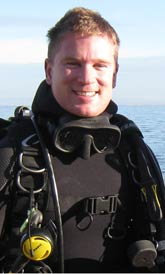« Despite Humidity & Mosquitos, Florida Rocks | Main
March 05, 2012
Underwater Filmmaking Workflow Part 1: Before the Dive
For the past several months, I've been heads down on writing, filming and editing two short films -- one about camouflage, and the other about Blue Heron Bridge. Now that it's clear why I've been M.I.A. since Oct., lets get to the point of this blog post: workflow.
Where to start? Without question, the story! Never ever press play on your camcorder/DSLR until you have a story. But a story isn't enough. It must be different and unique. I'm getting sick and tired of watching underwater films that simply tell viewers about the creatures that inhabit a reef. I think the saying goes... been there, done that.
The Dilemma by Pete Fowler is a great example of a film with a unique angle. I wish I had a sample clip, but I don't. The Dilemma was screened at last year's San Diego Undersea Film Exhibition. The film answers a simple question: What is the plural of octopus? The film poked fun at octopuses versus octopi and included beautiful octopi (pun intended if you've seen the film) footage. The film's unique story drew laughter and applause from the audience.
I think drafting the story is the most challenging step in the workflow. I spend countless hours writing and just when I think the story is done, I write some more. At some point though, you've got to call it quits and move onto the next step: identifying shots to accompany each sentence in your story. The shots must tell the story visually. Well known underwater filmmaker Mike Boom recently taught me a valuable lesson. I sent him a short film for review and he replied saying, "I like your opening shot, but it has nothing to do with the story." He was right... the opening shot had nothing to do with the story, but I included it anyway because I thought it was pretty. Big mistake.
If one of your sentences says, "the octopus is a master of camoflauge," then you need to visually show the octopus being a master of camouflage. While you may have gotten a great shot of an octopus crawling across the sea floor, your unproperly exposed shot of the octopus blending in with the reef is the most appropriate footage to use.
I spend a lot of time thinking about how to tell each sentence of the story visually. Then, I plagiarize. It's not what you think though. I go to VIMEO.com and watch films from profesional filmmakers like Howard Hall, Steve De Neef, Mike Elliott, Tony Wu and Rafa Herrero Massieu. When I find cool shots, I identify what makes them cool and think about how to incorporate them into my short film. Howard Hall once told me that he learned by watching other people's films. While it seems obvious, a lot of people overlook the lessons that can be learned simply by watching a film and taking notes.
Once I have all my shots outlined, I seperate them into two categories -- macro and wide-angle shots (I shoot with a Canon 7D, so I don't have the luxury of switching from wide angle to macro during a dive). Finally, I shrink them down to the smallest font I can read, print them out on a half a sheet of paper and laminate it; that way, I can reference the card during my dives to ensure I get all the shots I need.
The next step: the dive. But we'll save that for part two.
Posted by jroualdes at March 5, 2012 11:18 PM








